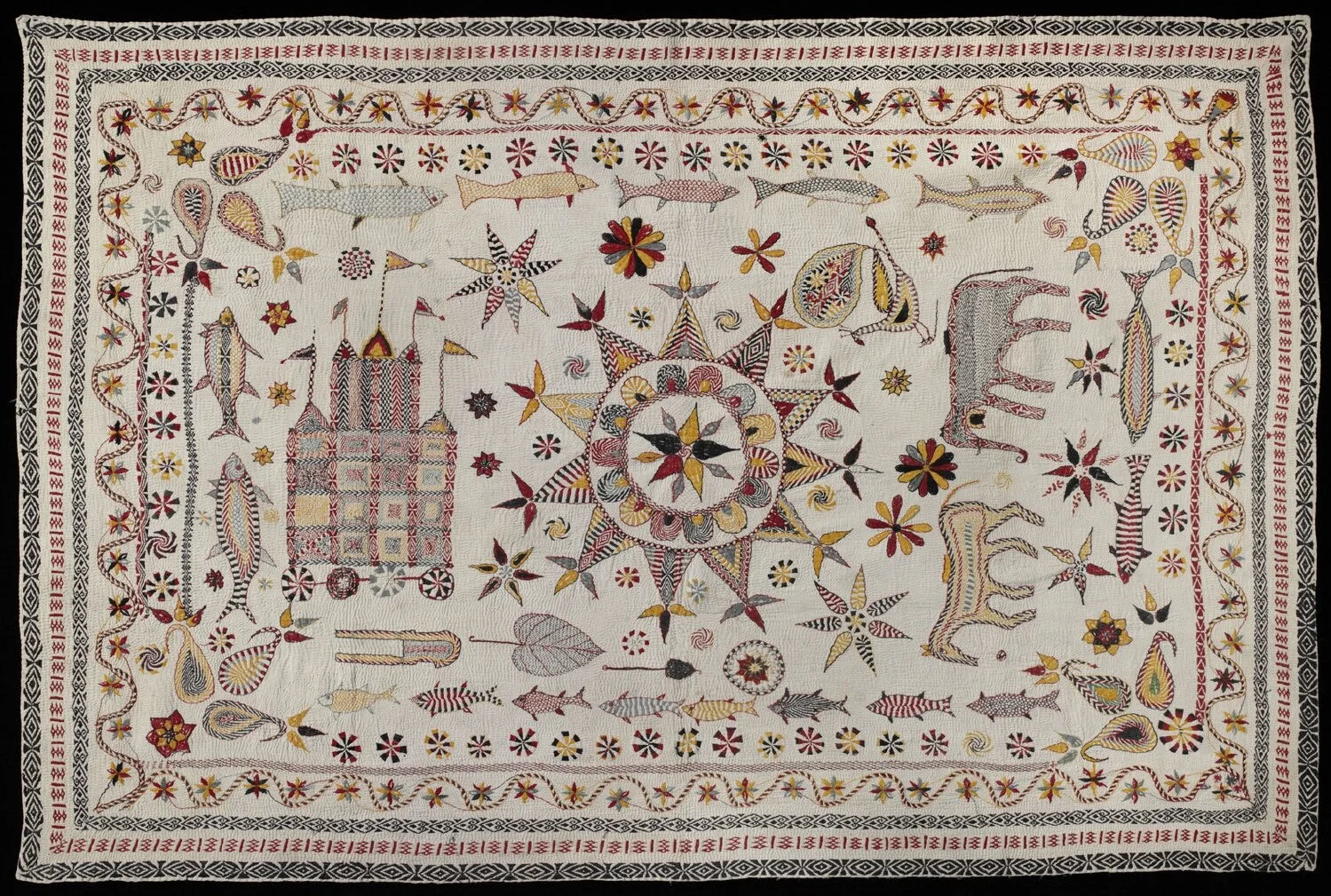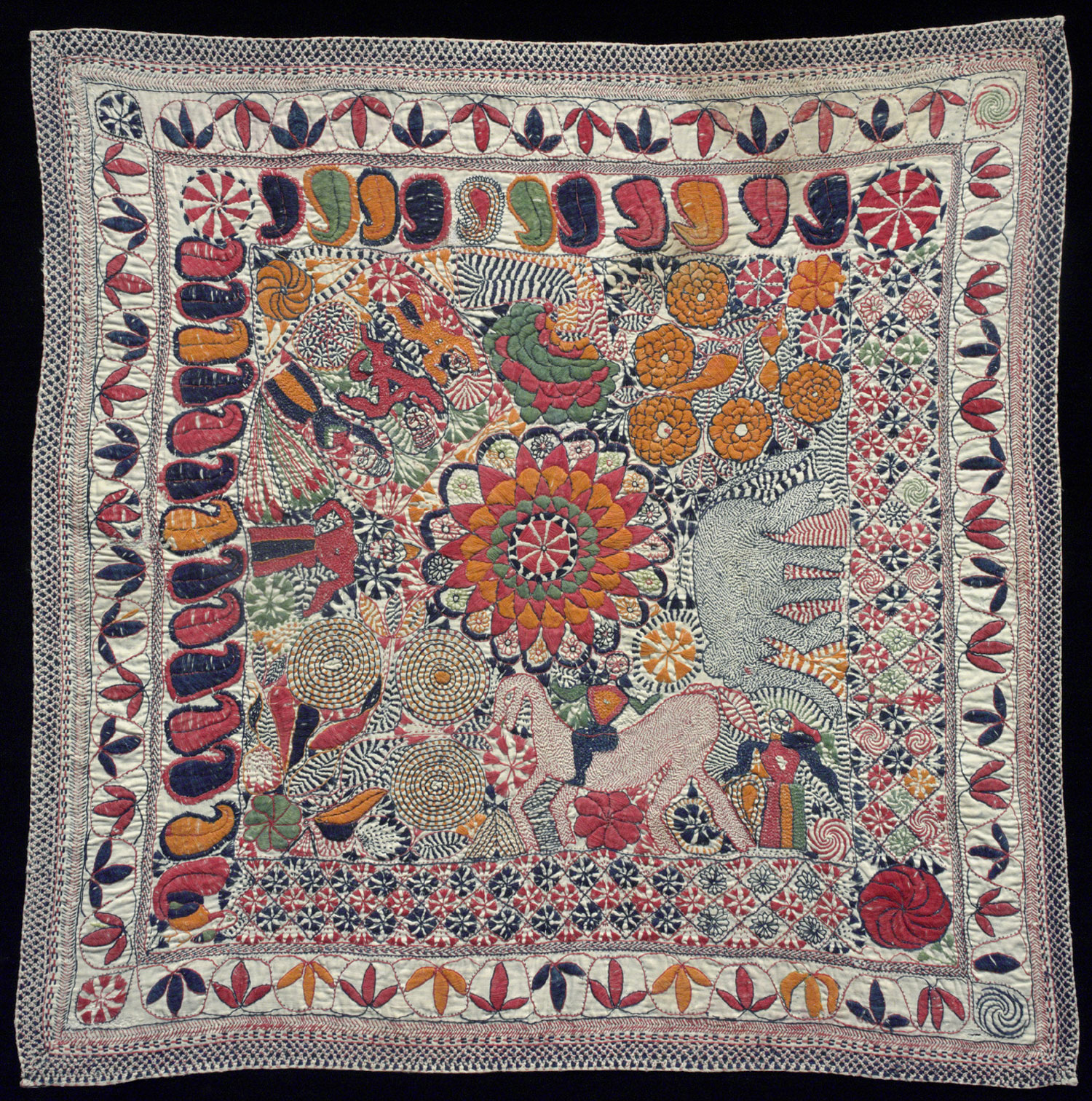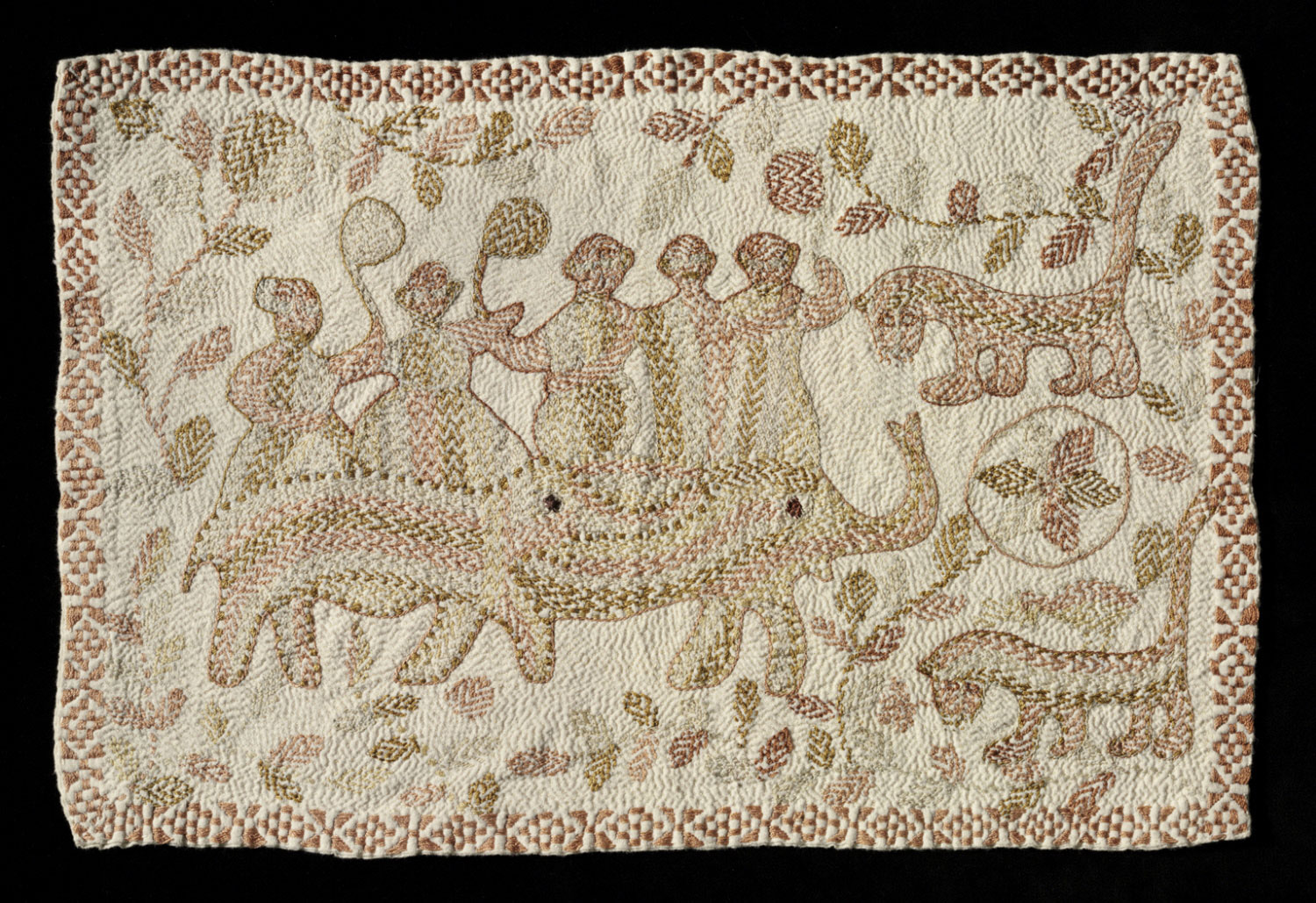Kantha, India
Kantha textiles are among India’s most treasured examples of artisanship. An exercise in resourcefulness, the techniques of kantha first emerged in West Bengal and Bihar, where women would recycle old saris and dhotis, layering, stitching and embellishing the scrap fabric to make blankets for their babies. Even the threads of the original cloth were pulled out and re-used for embroidery.
The art of kantha is related to the spiritual practice of “making whole again that which is fragmented or broken.” By the 19th century, kantha had fallen out of use and may have been lost had it not been reinterpreted for a contemporary market. Today, kantha is best-known as a set of embroidery techniques; layering different fabrics in the traditional style is no longer widely practiced.
To make the kantha, decorative patterns are first traced onto a fabric panel. A variety of stitches – darning stitch, satin stitch, loop stitch and stem/split stitches – are then applied to render the geometric designs. Long running stitches are broken on the reverse by short stitches, which creates the dotted look synonymous with kantha. One of the specialty design techniques associated with kantha is known as ‘modelling’ – using tightly packed rows of parallel stitches to highlight a central design.
Towards the middle of a motif, the artisan will adjust the density of stitches to create areas of contrast. Traditional kantha would be decorated with patterns inspired by the mandala, a 100 or 1000 petal lotus flower. Contemporary patterns have grown increasingly figurative. A dozen distinct types of kantha are sewn in Bengal and Bihar today, among them archilata kantha (small bags), baiton kantha (square wraps used to carry valuables), lep kantha (heavily padded quilts), and sujani kantha (a decorative cloth used during religious ceremonies).




